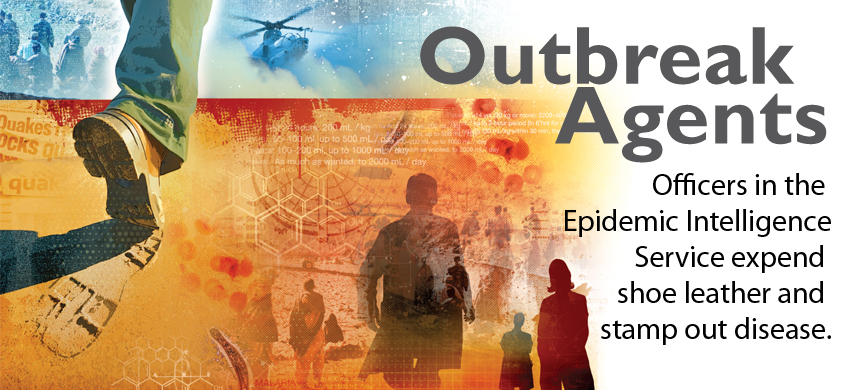
Every day for a month last summer, Cyrus Shahpar, A&S ’96, wilted in unending heat and humidity as the makeshift field hospitals and hotels he spent time in repeatedly lost power. As he shuttled from Islamabad to remote regions of Pakistan to search for eruptions of illness, he also worried about stumbling over exploding bombs planted by anti-government forces. Threats of violence led to restrictions that led to harried and uncertain travel. The month-long Ramadan holiday forced him to slow the work pace of a staff that couldn’t eat or drink during the daylight hours.
Shahpar, until recently a chief resident in emergency medicine at Johns Hopkins Hospital, was shipped off to Pakistan in search of new outbreaks of cholera and other diseases that all too often accompany large-scale flooding, like the August deluges that inundated one-fifth of Pakistan, killed 2,000 of its people, and threatened the health of more than 20 million. Acting as an officer in the Epidemic Intelligence Service (EIS), a branch within the federal Centers for Disease Control and Prevention (CDC), Shahpar trained local doctors to spot outbreaks, sent teams to investigate them once they were reported, and took samples in the field and sent them off to labs to check for the presence of disease—tasks that his residency couldn’t prepare him for. “The day-to-day work in an emergency like this is not like a typical workday,” he says. “We work longer, in more austere environments, and with more urgent goals. It is much like working in an emergency department in a hospital, but for weeks at a time.”
Shahpar wasn’t just literally getting his feet wet. Like all EIS novices, many of whom had applied fresh out of medical school or residency, or who recently graduated with advanced degrees in public health, he was sent into the field on the heels of one mere month of training in July. His charge was to practice the epidemiological method known as “disease surveillance,” the science of tracking down outbreaks of illness as they happen in hopes of stopping them before they claim staggering numbers of victims. With plans to make public health a major part of his career post-EIS, Shahpar says the inconveniences—and the two-year commitment to the Service—come with the gig. “This has reaffirmed my interest in global health issues and the need for us to mount a global response to deal with them,” he says, adding that he’s looking forward to 22 more months of traveling around the world to deal with health crises head on.
Like many of the 3,000-plus EIS officers who have come before him, Shahpar is more energized than petrified by the challenges presented by runaway diseases. During the EIS’s 50-year history, its doctors and alums have overtaken some of the most persistent global scourges, stood watch over New York City after 9/11 and Hurricane Katrina–ravaged New Orleans, and gotten in front of hundreds of local illnesses that start in contaminated food, water, and air. Each officer earns $55,000–$75,000 per year but provides an immeasurable boon to health in the longer term, with nearly three out of four officers remaining at CDC or serving in local and state health departments in the United States after their EIS hitch is up. Their ubiquity has strengthened the approach to public health nationwide, sharpened the tools used to monitor outbreaks, and stepped up the response to the advent of new strains of disease around the world.
And despite often plying their trade under harrowing circumstances, those who have taken the risks that come with stints in the EIS swathe memories of their time there in the warm mist of nostalgia. Many say they spent the best two years of their careers up to their elbows in mysterious diseases. “There was always something new, something going on,” says Bernard Guyer, professor emeritus of children’s health at the Bloomberg School of Public Health and an EIS officer from 1972 to 1974. “The phone rang all the time with news of all kinds of potential outbreaks. It was great fun. I loved it.”
THE IDEA OF EMPLOYING a blanket-like approach to epidemiology, mixed with a quick-and-dirty training program designed to see if new public health practitioners would sink or swim in the pathogen-riddled world, has its origins at Johns Hopkins University. Alexander Langmuir, then an associate professor at the Bloomberg School, conceived of the EIS and brought it into being in 1951, when he recruited a cadre of Johns Hopkins professors to teach the first few groups of cadets.
